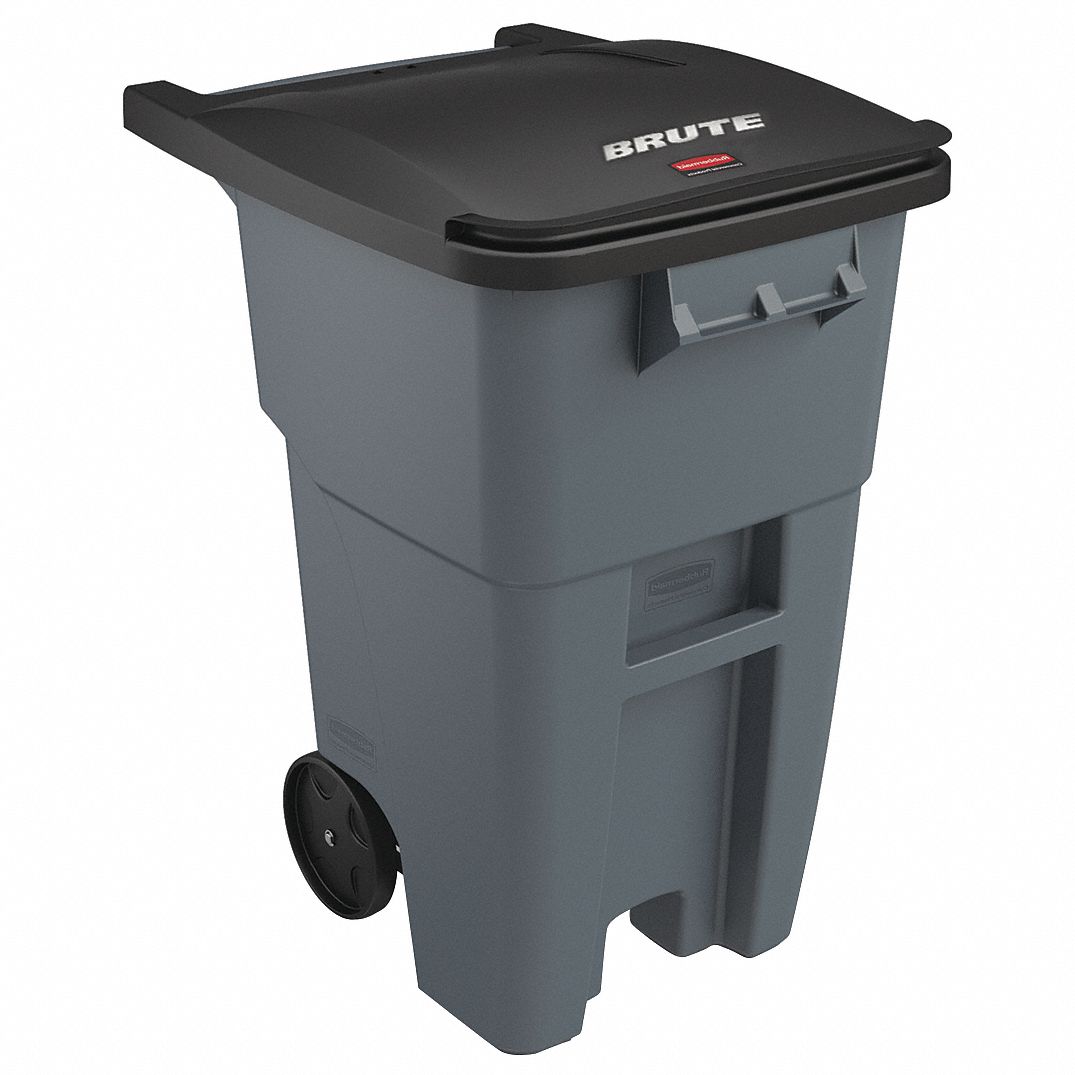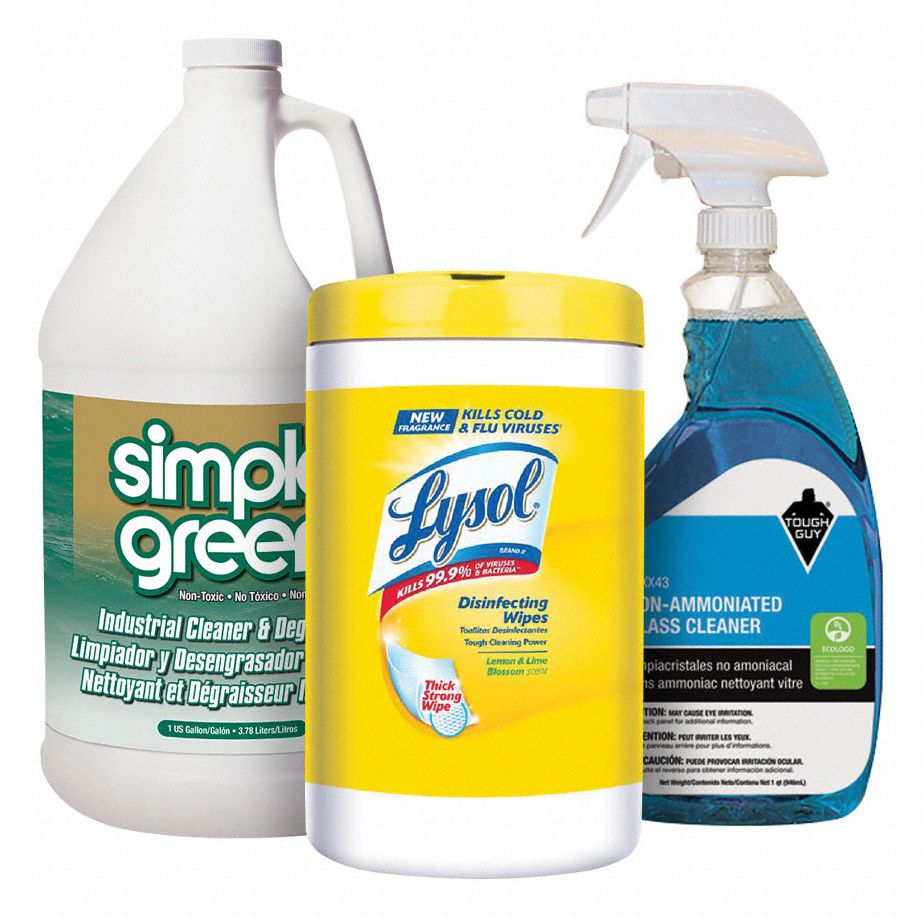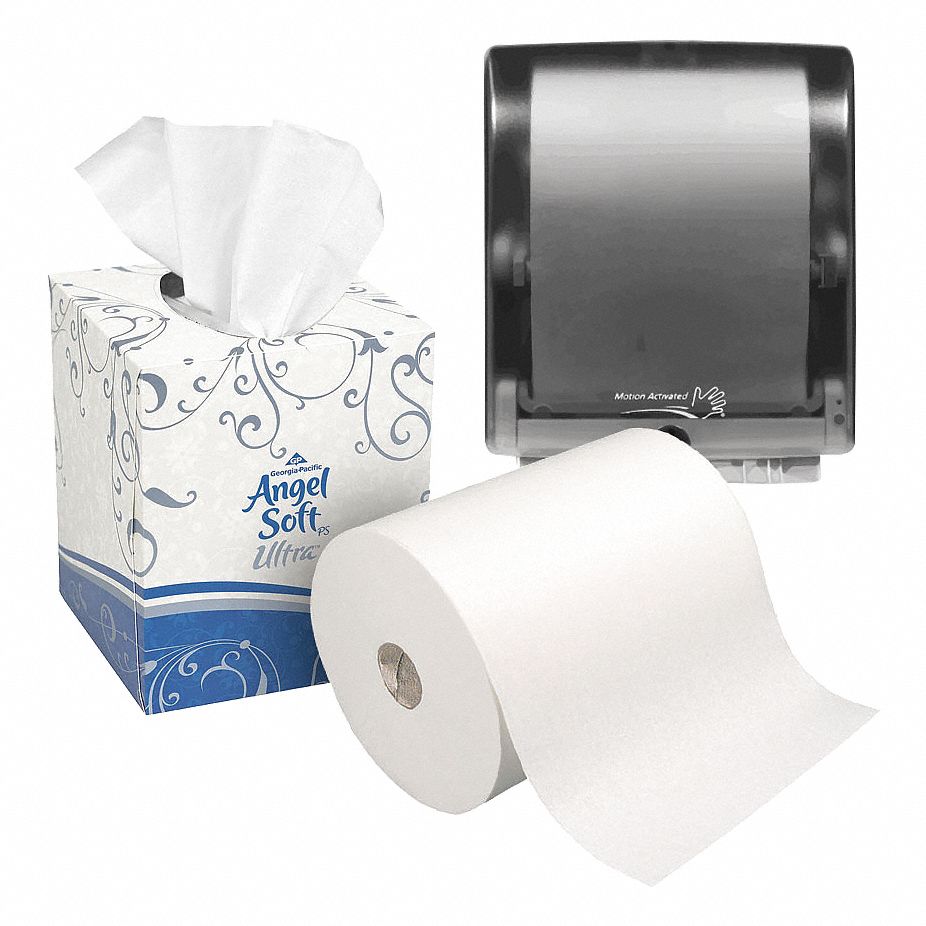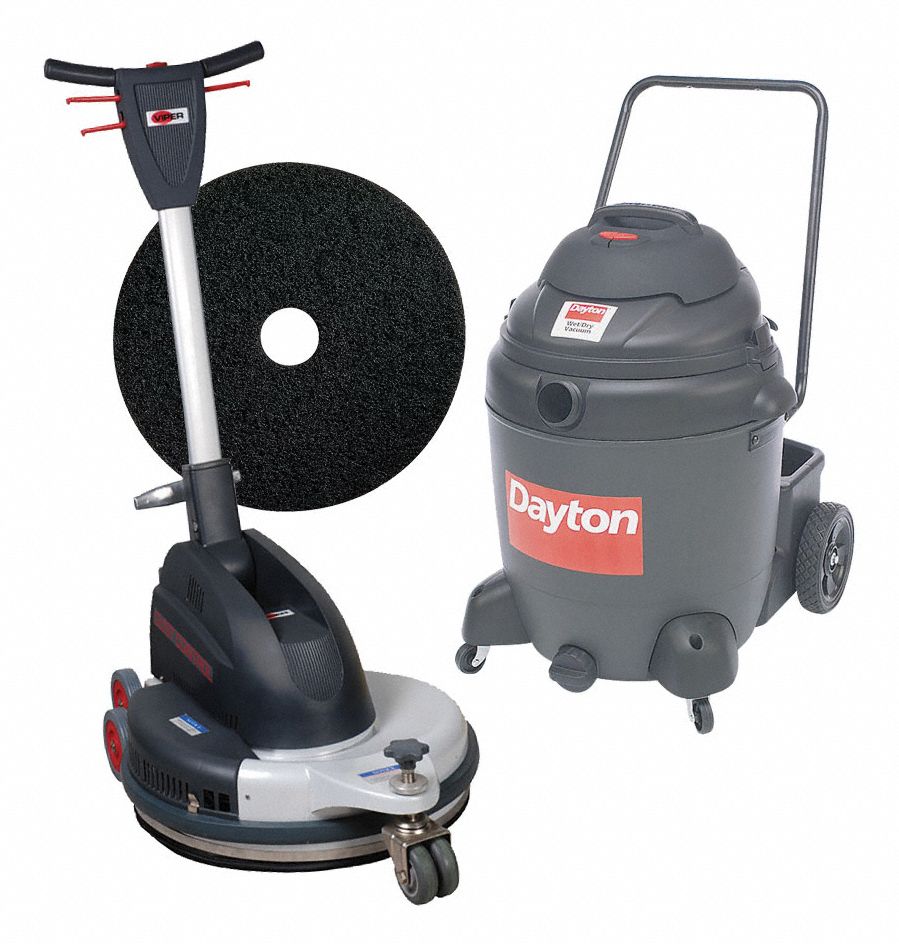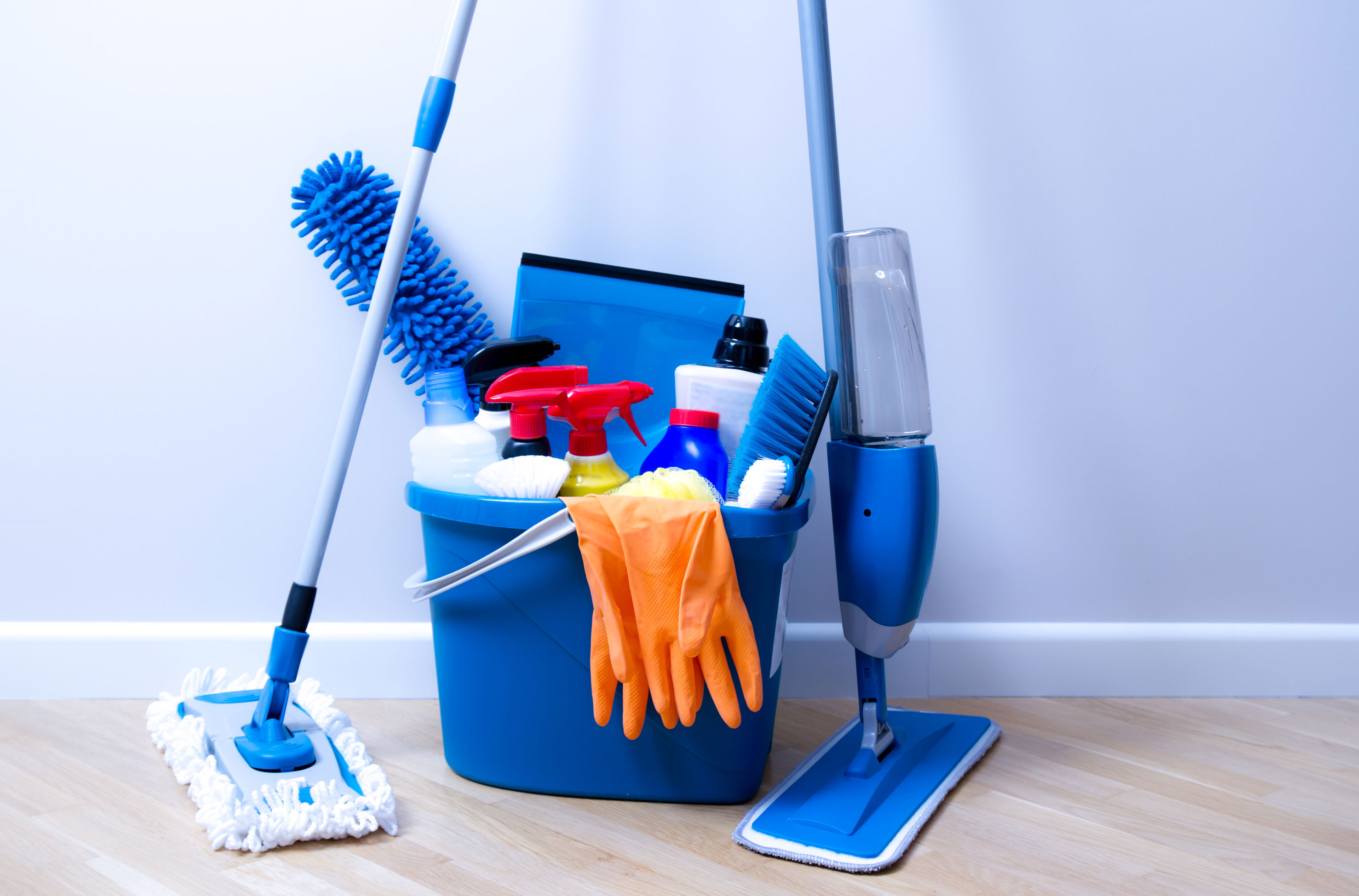

Wet Mopping vs. Dry Mopping: What’s the Difference?
By Grainger Editorial Staff 8/1/22


Not all mops are the same. When it comes to wet and dry mops, each has a distinct purpose. When used correctly and in the right setting, wet and dry mops both offer different benefits. Learn how to use a wet or dry mop to properly clean and maintain your flooring.
Differences Between a Dry Mop and Wet Mop
A dry mop, also known as a dust mop, is used without water to help pick up dirt and debris. Dry mops, which may be cotton but are increasingly made from microfiber, combine sweeping and cleaning in one tool. Compared to a broom that often just moves debris around, dry mops help collect debris while it’s pushed across the floor. When performed correctly, studies have found, dry mops can remove more dirt, dust and bacteria from the floor than wet mop heads. Dry mopping can also be done throughout the workday to help maintain floors without creating obstacles or leaving a wet, slippery floor.
Dry mopping is often used before a wet mop to help thoroughly clean the floors. Wet mopping uses water and a cleaning solution to clean up any remaining dried debris and grime. Besides cleaning the occasional spill, wet mopping is usually done at the end of the day when wet floors will decrease the risk of injury or create obstacles for employees and customers.
Understanding the differences between the two types of mopping can help ensure your floors are properly maintained.
| Wet Mops | Dry Mops | |
|---|---|---|
|
Material |
Cotton, yarn, sponge, rayon, synthetic fibers |
Microfiber, cotton |
|
Uses |
Cleaning spills, removing stains, cleaning dust and dirt, disinfecting |
Prepping for wet-mopping, removing debris, replacing broom |
|
Benefits |
Cleans dirt, grease and spills from high-traffic areas. |
Minimal prep work, best for cleaning hardwood flooring; Less labor intensive, reduces chemical and water usage; Helps eliminate cross-contamination during cleaning tasks. |
Wet vs. Dry Mopping Efficiency
Construction
According to the EPA, microfiber cleaning materials blend microscopic polyester fibers to create tiny hooks that sweep up and hold dust, dirt and grime. Microfibers are 1/16 the thickness of human hair and can hold six times their weight in water. Microfiber dust mops also weigh approximately five pounds less than conventional wet loop mops. Compared to dry mops, wet mops are usually larger with heads constructed typically from cotton, yarn, sponge or synthetic fibers.
Water Usage
The density of microfiber allows microfiber mop heads to hold six times their weight in water compared to regular cotton mops. This means one microfiber mop can clean approximately 400-500 square feet at a time before being washed. Traditional cotton mops can clean for about 100 square feet before being rinsed and wrung out. Using less cleaning solution provides additional environmental benefits since many professional cleaning products contain chemicals that are washed down the drain and may be absorbed into the air, soil, and water.
Disinfection
According to a 2007 American Journal of Infection Control study, microfiber mops removed far more microbes than standard cotton string mops. The study found using a microfiber mop with detergent removed 95% of microbes, while only 68% of microbes were removed with detergent and a cotton string mop. In one case study to evaluate the effectiveness of the microfiber mops, janitorial staff at the University of California Davis Medical Center (UCDMC) performed demonstrations by first cleaning an area with a conventional mop and then re-cleaning it with a microfiber mop. In the study, the microfiber mop captured more dust and dirt, and when the same test was repeated in reverse order, the conventional mop could not capture more dust and dirt beyond the capabilities of the microfiber mop.
Durability
One standard string mop head normally lasts around 15-30 washes, while microfiber dust mop heads usually last about 150-200 washes. Microfiber is more durable than cotton, helping its mop heads last longer. However, when bleach or acidic chemicals are required, cotton is better than microfiber. Chemical products can break down and destroy microfiber. Synthetic and blended microfiber mops are the most durable. Mops with antimicrobial fibers can help prevent bacterial growth, odor and discoloration.
Launderability
A mop’s launderability is based on the number of commercial washing and drying cycles it can handle before the construction degrades or the performance declines. If laundering is available, choosing a washable mop head is usually the most economical option. Synthetic, rayon and blended fiber mops have the highest levels of launderability.
Choosing the Right Mopping Method
A comprehensive mopping system can significantly impact your facility’s health and your floor’s appearance. Learn how to use a wet and dry mop to properly clean and maintain your flooring.
How To Use a Dry Mop
Dry mop procedures are a lot less time-consuming than using a wet mop. Using a dry mop first can make wet mopping easier and ensure a cleaner floor.
Follow these steps when dry mopping:
- Keep the mop head firmly against the floor when cleaning. Be careful not to lift the mop in the middle of a stroke.
- Every few strokes, lift the mop head and shake over a trash can to remove the collected debris.
- Move back and forth over the floor in a uniform pattern, overlapping a few inches with each stroke.
- If you are using a spray or disinfectant on the floor, follow the manufacturer’s instructions for the most effective use.
How To Use a Wet Mop
Wet mops are designed to be highly absorbent. Soaking the floor helps loosen the dirt, then rinsing with a wrung-out mop absorbs the water and dirt as it cleans. Rinsing the floor helps leave a streak-free shine.
- Use a broom, vacuum or dry mop to remove dirt, dust and debris from the floor.
- Wet the mop with warm water and a cleaning solution and work in sections to clean the floor so that as one area soaks, another section can be cleaned.
- Wet a section of the floor and let stand for a couple of minutes to allow the heat, water, and cleaning solution to loosen any dirt or debris.
- Rinse the mop and wring it out to remove as much water as possible.
- Use a back-and-forth motion to wipe the floor to help soak up the water and dirt simultaneously.
- Rinse the mop once it feels heavy and full, then wring it out and repeat until finished.
Caring for your flooring often requires using both a wet mop and a dry mop. Dry mopping can be done quickly and is best if your space is relatively clean as it doesn’t require additional chemicals. However, wet mopping is usually the better option for ongoing maintenance if your floors collect dirt and grease easily. Taking advantage of each mop’s cleaning benefits can make your floor care process easier and more efficient.
The information contained in this article is intended for general information purposes only and is based on information available as of the initial date of publication. No representation is made that the information or references are complete or remain current. This article is not a substitute for review of current applicable government regulations, industry standards, or other standards specific to your business and/or activities and should not be construed as legal advice or opinion. Readers with specific questions should refer to the applicable standards or consult with an attorney.


